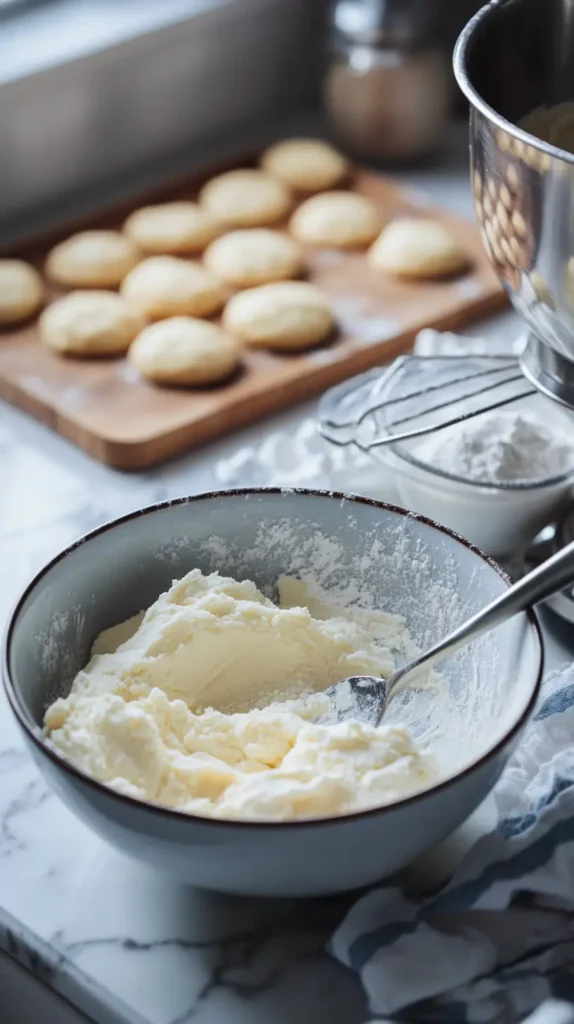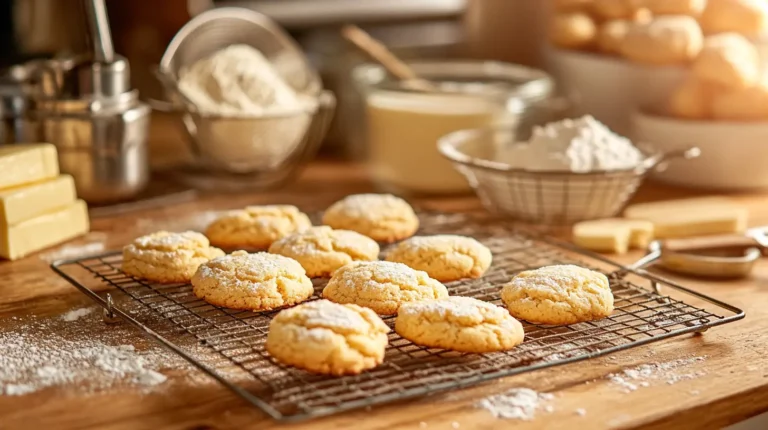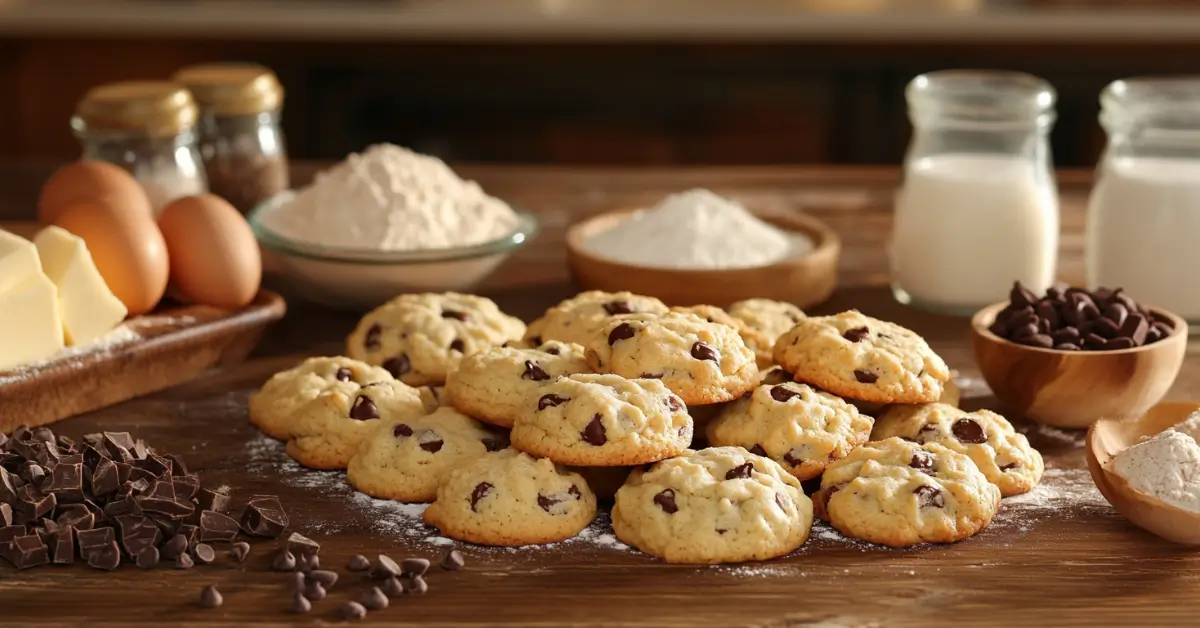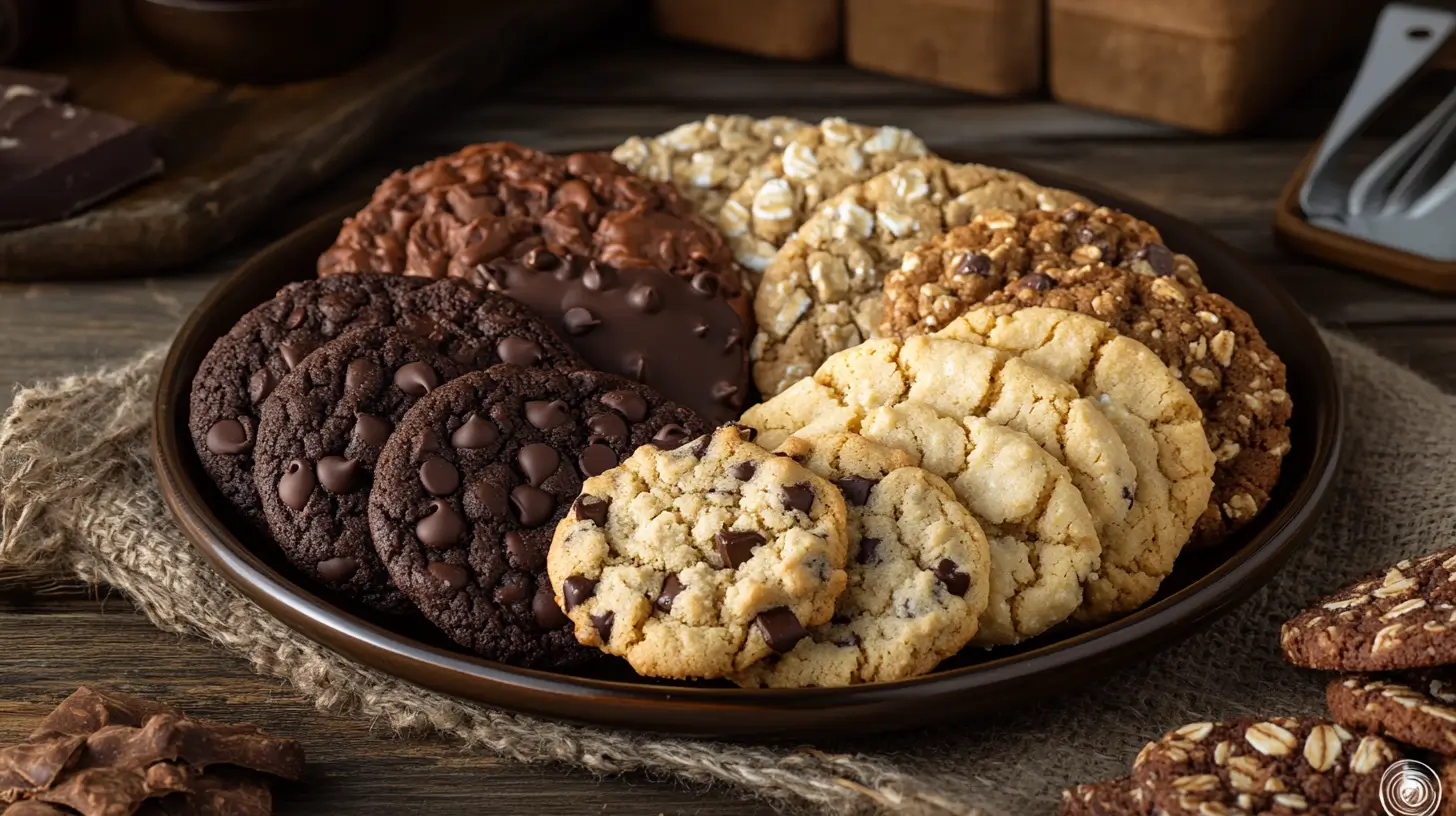Creating light and airy cookies requires more than just following a recipe. It’s about understanding the science behind each ingredient and technique, ensuring every bite delivers the perfect texture. In this guide, we’ll explore the factors that contribute to crafting these delightful treats.
The Role of Ingredients in Achieving Light Cookies
The key to making cookies light and airy begins with selecting the right ingredients. Each component interacts with the others, influencing the texture, structure, and flavor.
Choosing the Right Flour for Light and Airy Cookies
The type of flour you use has a profound impact on what makes cookies light and airy. Flours with lower protein content, such as cake or pastry flour, result in a tender and delicate crumb.
- Protein content: Lower protein creates less gluten, leading to softer cookies.
- Sifting: Always sift flour to remove clumps and aerate it for a lighter dough.
- Substitutes: Consider blending all-purpose flour with cornstarch to mimic cake flour.
By prioritizing the right flour, you ensure a solid foundation for light and airy cookies.
The Importance of Baking Powder and Baking Soda
Leavening agents are essential for what makes cookies light and airy. They introduce air pockets, giving cookies their soft and fluffy texture.
- Baking powder: A combination of acid and base that releases gas when exposed to heat.
- Baking soda: Requires an acidic ingredient, like brown sugar or yogurt, to activate.
- Ratios: Use precise measurements; too much can make cookies taste bitter.
When used correctly, these agents create the lift necessary for beautifully airy cookies.
Butter or Oil: What’s Better?
Fats significantly influence what makes cookies light and airy, but the choice between butter and oil can alter the outcome.
- Butter: Adds flavor and helps with structure due to its solid nature.
- Oil: Produces moister cookies but may lack the aeration provided by creaming butter.
- Combination: Mixing both can balance flavor and texture.
For the lightest cookies, opt for softened butter and use the creaming method to incorporate air.
Mastering the Mixing Technique
The mixing process is where texture is truly shaped. Proper techniques prevent dense cookies and enhance what makes cookies light and airy.
The Creaming Method: Key to What Makes Cookies Light and Airy
Creaming is essential for creating an airy dough. This process involves beating butter and sugar until light and fluffy, a critical step in achieving the perfect texture.
- Tools: Use a stand mixer or hand mixer for consistency.
- Duration: Cream butter and sugar for 2-3 minutes until pale.
- Room temperature: Ensure butter is soft but not melted.
The creaming method incorporates air, which translates into lighter cookies.
Avoiding Overmixing
Overmixing can ruin what makes cookies light and airy by overdeveloping gluten and deflating air pockets.
- Fold gently: Use a spatula to mix dry ingredients into wet.
- Stop early: Mix just until combined to preserve air.
- Add-ins last: Incorporate chocolate chips or nuts at the end.
By handling the dough with care, you retain the light texture essential for airy cookies.

Temperature Tricks for Perfect Cookies
Temperature plays a pivotal role in determining what makes cookies light and airy. From chilling the dough to baking at the ideal temperature, precision is key.
Chilling the Dough to Achieve What Makes Cookies Light and Airy
Chilling dough allows fats to solidify, reducing spread and improving texture.
- Minimum chill time: Refrigerate dough for at least 30 minutes.
- Overnight option: Extended chilling enhances flavor and structure.
- Wrap tightly: Prevent drying out by sealing dough in plastic wrap.
Cold dough holds its shape better, resulting in thicker, airier cookies.
Baking at the Right Temperature
Proper baking ensures that what makes cookies light and airy isn’t compromised. The right temperature creates the ideal rise and crumb.
- Preheat oven: Ensure consistent heat by preheating fully.
- Ideal range: Bake cookies at 350°F to 375°F (175°C to 190°C).
- Even spacing: Use parchment paper and space cookies evenly for uniform baking.
Monitoring your oven temperature guarantees perfectly light and airy cookies every time.
Understanding Dough Consistency
The consistency of your dough directly impacts what makes cookies light and airy. Finding the right balance between soft and stiff dough is crucial.
Soft Dough vs. Stiff Dough
The texture of the dough dictates the final outcome of your cookies.
- Soft dough: Contains more moisture, resulting in softer and airier cookies.
- Stiff dough: Yields denser cookies with less rise.
- Adjustments: Add a splash of milk for softer dough or more flour for stiffer dough.
By controlling dough consistency, you can tailor your cookies to your desired level of lightness.
Adding Milk or Cream
Liquids like milk or cream can enhance what makes cookies light and airy by adding moisture and tenderness.
- Whole milk: Adds richness without compromising structure.
- Heavy cream: Introduces additional fat, creating a velvety crumb.
- Balance: Avoid adding too much liquid, which can make the dough sticky.
With the right amount of liquid, you can achieve cookies that are light, airy, and utterly irresistible.
The Science of Air Incorporation
Incorporating air into your dough is a crucial factor in creating light and airy cookies. This process involves using specific techniques and ingredients to trap air, which expands during baking.
Using Whipped Egg Whites
Whipped egg whites are a powerful tool in achieving what makes cookies light and airy. They introduce air into the dough, creating a delicate and fluffy structure.
- Room temperature whites: Whip best when not cold, leading to better volume.
- Stiff peaks: Whisk until peaks hold their shape without collapsing.
- Folding technique: Gently fold whipped whites into the dough to retain air bubbles.
When used correctly, whipped egg whites can transform the texture of your cookies, making them incredibly airy.
The Role of Steam During Baking
Steam plays a significant role in what makes cookies light and airy by helping the dough rise and expand.
- Moisture sources: Ingredients like eggs, butter, and milk release steam during baking.
- Oven heat: Rapid heat converts liquid in the dough to steam, creating lift.
- Controlled spread: Steam ensures the cookies puff up before setting.
By harnessing the power of steam, you can achieve the perfect texture in every batch of cookies.

Common Mistakes to Avoid
While perfecting what makes cookies light and airy, small mistakes can lead to dense or flat results. Avoid these common pitfalls to ensure success.
Skipping Ingredient Measurements
Precision is non-negotiable when it comes to what makes cookies light and airy. Incorrect measurements can drastically alter the texture.
- Use a scale: Weigh ingredients for exact measurements.
- Level your flour: Avoid overpacking the measuring cup.
- Follow ratios: Stick to the recipe to maintain balance.
Accurate measurements ensure the chemical reactions required for airy cookies proceed smoothly.
Using Expired Leavening Agents
Expired baking powder or baking soda compromises what makes cookies light and airy by failing to provide the necessary lift.
- Check expiration dates: Replace old leavening agents before baking.
- Test for activity: Dissolve baking powder in water or baking soda in vinegar; both should bubble.
- Store properly: Keep leavening agents in a cool, dry place.
Fresh ingredients are essential to achieving cookies with the perfect rise and airiness.
FAQs on What Makes Cookies Light and Airy
What makes cookies more airy?
To make cookies more airy, you need to focus on incorporating air into the dough and ensuring proper leavening. Use techniques like the creaming method, where butter and sugar are beaten together to trap air. The inclusion of leavening agents such as baking powder or baking soda is also essential, as these create gas bubbles during baking, giving the cookies lift. Additionally, using whipped egg whites and gently folding them into the dough can significantly increase airiness. Lastly, ensure you don’t overmix the dough, as this can deflate air pockets and result in denser cookies.
What makes cookies light and fluffy?
Cookies become light and fluffy due to the combination of the right ingredients and proper preparation techniques. Low-protein flour, like cake or pastry flour, helps achieve a tender texture. Accurate measurements of baking powder or baking soda ensure adequate rise, while the creaming method aerates the dough. The temperature also matters—chilling the dough before baking prevents spreading, allowing the cookies to puff up rather than flatten. Moreover, maintaining the right balance of moisture and fat, such as using softened butter and not melted butter, is crucial for achieving that fluffy consistency.
How can I make my cookies fluffier instead of flat?
To make cookies fluffier instead of flat, ensure that your butter is at the right temperature—softened, not melted. Cream the butter and sugar well to incorporate air, and avoid overmixing when adding dry ingredients. Using fresh baking powder or soda will provide the necessary rise. Chilling the dough before baking is another critical step; it allows the fat to solidify, reducing spread and encouraging height. For added fluffiness, consider adding a small amount of cornstarch or cake flour to the dough to decrease gluten formation.
Why did my cookies come out so light?
Cookies can turn out light due to several factors, most of which are positive! Proper incorporation of air during the creaming process, accurate amounts of leavening agents, and using low-protein flours can all result in lighter cookies. If your cookies feel too light or lack structure, it may be because the dough had too much air or moisture, or you used too little flour. Additionally, overbaking or baking at a temperature slightly too high can cause cookies to dry out, making them seem lighter than intended. To adjust, ensure precise measurements and monitor baking time closely.
Conclusion
Mastering what makes cookies light and airy is a rewarding endeavor that combines scientific principles with precision and care. Achieving the perfect texture begins with understanding the role of air incorporation, whether it’s through techniques like whipping egg whites, the creaming method, or harnessing the power of steam during baking. Each of these methods introduces air pockets that expand during baking, contributing to the soft, fluffy texture we all love.
Equally important is avoiding common mistakes, such as using expired leavening agents or neglecting to measure ingredients accurately. Even small errors can affect the final outcome, underscoring the importance of attention to detail. Every step matters, from selecting the freshest ingredients to mixing and baking with care.
With these insights, you’ll have the tools to consistently create cookies that are not only light and airy but also deliciously satisfying. Your efforts will result in treats that delight family and friends, showcasing your mastery of the art of baking.





